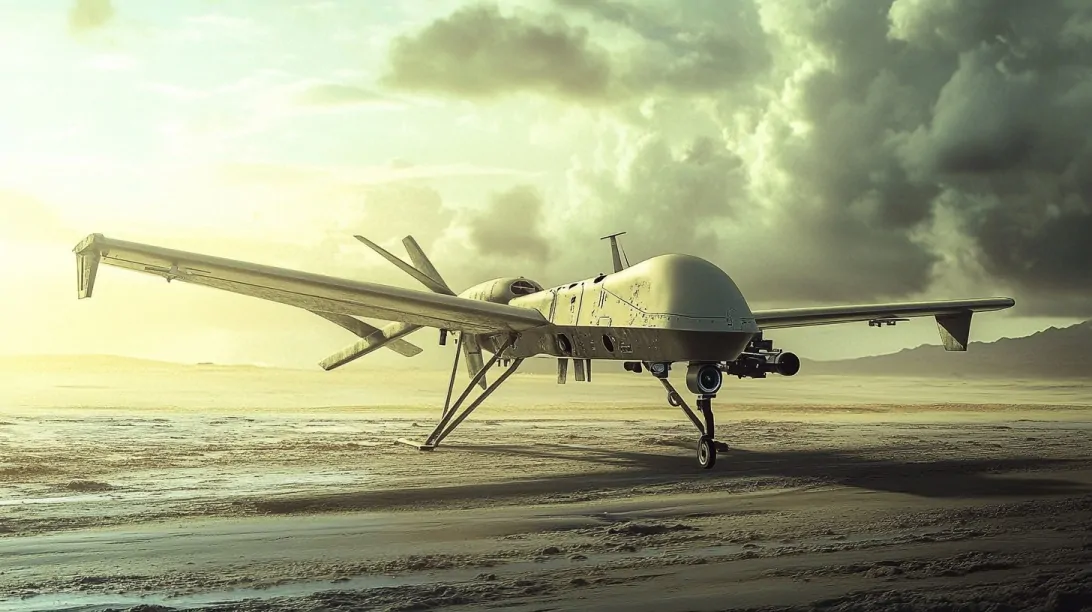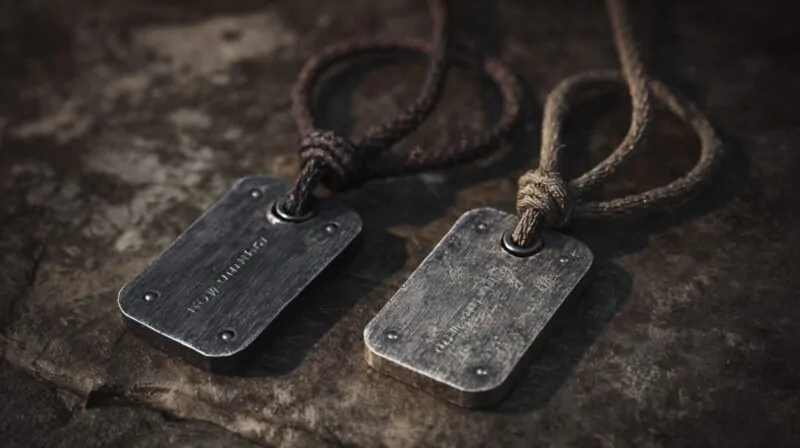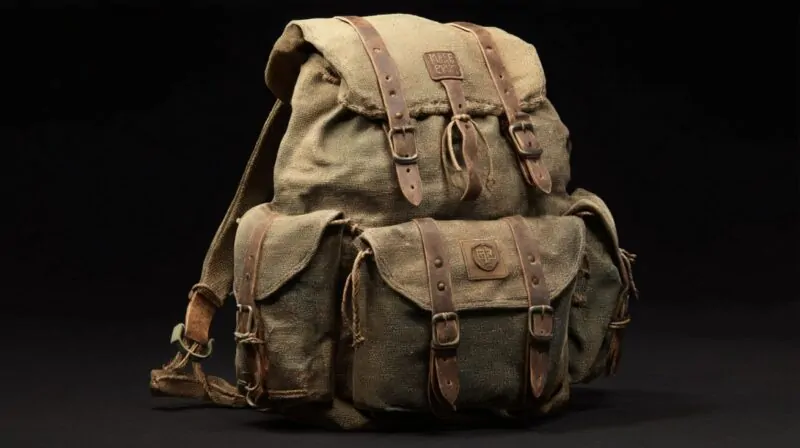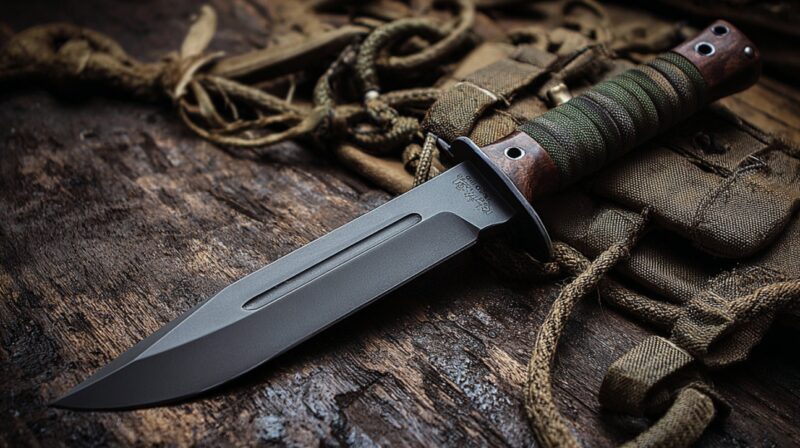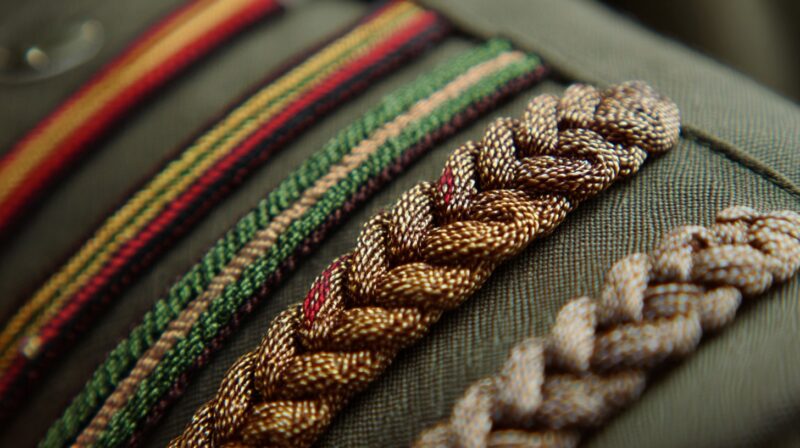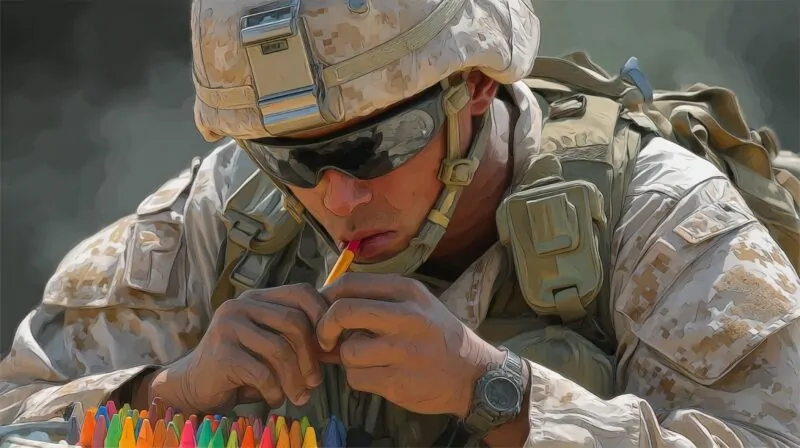Military drones, or unmanned aerial vehicles (UAVs), have become critical instruments in modern warfare. No longer just reconnaissance tools, they now deliver lethal strikes, conduct electronic warfare, and support troops with intelligence in real time.
Global militaries invest heavily in expanding their UAV arsenals, recognizing that air superiority and battlefield control increasingly depend on remotely piloted and autonomous platforms.
By 2025, many countries had rapidly moved to acquire or manufacture drones tailored for various missions, ranging from nano surveillance models to high-altitude endurance systems.
However, fleet size and technological prowess offer insight into global military power dynamics.
Here are the ten nations with the most extensive and capable drone fleets, based on recent estimates and active deployment trends.
| Rank | Country | Estimated Number of UAVs (2025) |
|---|---|---|
| 1 | United States | ~13,000 |
| 2 | Turkey | ~1,421 |
| 3 | Poland | ~1,209 |
| 4 | Russia | ~1,050 |
| 5 | Germany | ~670 |
| 6 | India | ~625 |
| 7 | France | ~591 |
| 8 | Australia | ~557 |
| 9 | South Korea | ~518 |
| 10 | Finland | ~412 |
Table of Contents
Toggle1. United States – ~13,000 UAVs
Right now, the U.S. can’t mass-produce small FPV drones, and that’s a glaring vulnerability.
In Ukraine, over 80% of battlefield casualties are caused by these drones—it’s a new era of warfare, and we’re not ready. On @HASCRepublicans, I’m working to change that. pic.twitter.com/f3JaKdhybv
— Congressman Pat Harrigan (@RepPatHarrigan) May 7, 2025
American military drone dominance remains unmatched, with an estimated fleet of around 13,000 UAVs by 2025.
Most of these serve tactical purposes, though many possess high-end capabilities that enable surgical strikes and real-time global surveillance.
- MQ-9 Reaper – Long-endurance hunter-killer drone capable of high-precision strikes and intelligence collection over vast distances.
- MQ-1C Gray Eagle – Armed reconnaissance drone used by the U.S. Army for strike and ISR operations.
- RQ-4 Global Hawk – High-altitude surveillance aircraft designed for strategic intelligence gathering across continents.
- RQ-11 Raven – Hand-launched mini drone primarily used for close-range battlefield reconnaissance.
Fleet composition shows that over 60% of U.S. UAVs consist of RQ-11 Ravens. These lightweight assets play crucial roles in platoon-level operations, feeding commanders live intelligence in conflict zones.
High-end UAVs such as the MQ-9 and RQ-4 remain essential in campaigns where persistent surveillance and precision strikes are required.
Exporting drone tech is not the primary focus for the U.S., but foreign military sales of systems like the MQ-9 Reaper continue to influence allied force structures.
With heavy investment in autonomous flight and AI, future American drones are expected to push operational boundaries in electronic warfare and stealth capabilities.
2. Turkey – ~1,421 UAVs
Turkey has emerged as a formidable drone power, thanks to a rapid expansion of its domestic UAV industry and strategic military deployments. With an estimated 1,421 drones by 2025, Turkey holds the second-largest military drone fleet globally.
Combat-proven platforms and aggressive export strategies have reshaped its global defense influence.
- Bayraktar TB2 – Medium-altitude long-endurance drone that has seen combat in Syria, Libya, Nagorno-Karabakh, and Ukraine. Equipped with precision munitions and real-time surveillance capability.
- ANKA-S – Satellite-controlled UAV developed by Turkish Aerospace for persistent surveillance and strike missions. Often used in operations against insurgents in remote regions.
- Bayraktar Akıncı – Strategic-level drone with cruise missile integration, capable of hitting high-value targets while maintaining flight endurance and altitude superiority.
A significant portion of Turkey’s drone success lies in export diplomacy. Nations such as Azerbaijan, Qatar, and Ukraine rely heavily on Turkish-made drones for frontline operations.
Baykar and Turkish Aerospace Industries (TAI) have positioned the country as a key supplier of affordable, effective UAVs that often outperform expectations in real-world conflict scenarios.
Rather than focusing solely on quantity, Turkish programs emphasize battlefield flexibility and self-sufficiency. Indigenous production lines, software autonomy, and locally made munitions ensure operational independence.
That doctrine, combined with combat feedback loops, fuels constant upgrades in drone systems and tactical methods.
3. Poland – ~1,209 UAVs
Poland has strategically built one of Europe’s largest numbers of military drones, prioritizing tactical versatility and integration with NATO operations.
By 2025, the Polish military operates around 1,209 UAVs, tailored for battlefield intelligence, loitering strikes, and frontline coordination.
- Warmate – Loitering munition developed by WB Group, capable of engaging targets autonomously. Used for precision strikes and known for portability and ease of deployment.
- Orlik PGZ-19R – Tactical UAV built for real-time reconnaissance and coordination with artillery and ground units.
- Orbiter 2/3 – Compact UAV systems developed in partnership with Israeli Aeronautics, used for ISR and target tracking across different terrains.
Poland emphasizes multi-role capabilities, equipping UAVs to serve as both intelligence collectors and light-strike platforms. Many systems support ground forces with near-instant situational awareness and kinetic options during dynamic engagements.
Investment continues in loitering munitions, reflecting a shift toward cost-effective precision warfare.
Fleet development aligns with Poland’s broader defense modernization efforts. As NATO’s eastern flank faces evolving threats, Poland’s drones provide strategic depth and flexibility across hybrid conflict zones.
Domestic production combined with Israeli collaboration accelerates adaptation cycles and reduces foreign dependency.
4. Russia – ~1,050 UAVs
❗Russia uses uncrewed aerial vehicles (UAVs) to target civilian & military sites in Ukraine.
In March a UAV attack in Odesa killed 12 civilians including five children.
In June Ukraine successfully struck a UAV launch site, destroying at least 120 UAVs.
🇺🇦#StandWithUkraine pic.twitter.com/Vg0x556Rnj
— Ministry of Defence 🇬🇧 (@DefenceHQ) August 11, 2024
Russia’s drone fleet has expanded significantly due to ongoing military engagements and a sharpened focus on indigenous UAV production.
The Russian Armed Forces operates approximately 1,050 drones, many of which are actively deployed along border zones and contested regions.
- Orlan-10 – Backbone of Russia’s tactical ISR operations. Widely used for artillery fire correction and battlefield monitoring, especially during campaigns in Ukraine.
- Searcher Mk II – Surveillance UAV acquired under an earlier deal with Israel, used to support reconnaissance missions.
- Altius-U – Long-range heavy attack drone under development with plans for precision-strike capabilities and high-altitude endurance.
A significant portion of the fleet comprises Orlan-series UAVs. These systems are cost-efficient, easy to deploy, and effective in synchronizing ground force activity. While not heavily armed, their ISR role directly shapes artillery and missile targeting.
Sanctions and export restrictions have forced Russia to invest heavily in domestic drone technology. Programs like the Altius-U and the Orion combat drone aim to close the capability gap with Western UAVs.
Despite production delays and dependency on foreign components in earlier years, Russia’s defense sector is pushing for complete localization of drone platforms.
Drone losses in high-intensity conflicts have accelerated testing and innovation cycles. Analysts note a shift toward kamikaze drones and electronic warfare-capable platforms that can disable communications or mislead GPS navigation in adversarial systems.
5. Germany – ~670 UAVs
Germany to supply Ukraine with 300 “Vector” drones
Germany’s Quantum-Systems has accepted an order from the Ukrainian Defense Ministry for 300 additional Vector-type reconnaissance drones, the company’s press service said.
The drones will be delivered as part of a military aid… pic.twitter.com/UnOpG1itgP
— NEXTA (@nexta_tv) May 31, 2023
Germany’s military drones, totaling around 670 units, reflect a pragmatic blend of imported platforms, tactical systems, and multilateral development projects.
Military drones use spans NATO operations, border monitoring, and overseas deployments in stabilization missions.
- LUNA – Tactical UAV used by the Bundeswehr for surveillance, battlefield reconnaissance, and communication relay.
- Heron 1 – Medium-altitude long-endurance drone leased from Israel for overseas missions, particularly in Afghanistan and Mali.
- Eurodrone – Under joint development with France, Spain, and Italy, designed to serve as Europe’s primary MALE UAV for combat and ISR missions.
Germany’s operational focus is currently weighted toward surveillance and ISR roles rather than strike capacity. Heron 1 drones have provided long-duration coverage in various theaters but remain unarmed. However, the Eurodrone project is expected to mark a shift toward armed UAV capabilities once fielded.
Fleet development aligns with European Union defense initiatives. Cross-border cooperation is critical in reducing cost, improving interoperability, and securing supply chains. While Germany continues to lease or co-develop key drone assets, policy debates around armed UAV use have slowed full-scale adoption of strike-capable models.
Modernization of the Bundeswehr includes digitalization and enhanced battlefield transparency. Drones play a central role in that strategy, especially in missions requiring persistent ISR and coordination with mechanized ground units.
6. India – ~625 UAVs
India operates an estimated 625 military drones, with efforts focused on scaling domestic production while maintaining critical imports.
Persistent border tensions and regional security challenges have driven investment in reconnaissance, endurance surveillance, and limited strike capabilities.
- Spylite – Mini-UAV developed in Israel and assembled locally. Used extensively by ground forces for tactical surveillance in high-altitude areas.
- Heron 1 – MALE drone acquired from Israel, primarily deployed along the Line of Control and in maritime patrol missions.
- Rustom-II / TAPAS-BH-201 – Indigenous drone still undergoing trials, designed for long-endurance ISR missions with potential for light armament.
Most of India’s fleet consists of Israeli-origin platforms that serve immediate strategic needs. These drones operate along sensitive borders with China and Pakistan, where terrain complexity demands continuous aerial monitoring.
While the majority are unarmed, their presence enables rapid deployment of manned systems based on real-time intelligence.
India’s Defense Research and Development Organization (DRDO) continues work on Rustom-II and other indigenous UAVs.
While technical delays and procurement hurdles have slowed progress, local programs reflect a long-term push toward aerospace independence. Collaborations with private-sector players like Bharat Electronics and HAL support this goal.
India’s tri-service doctrine increasingly incorporates drones into joint operations. Naval UAV integration is rising, with coastal and maritime security becoming priority areas.
The focus remains on surveillance and data collection, though plans are in motion for combat-capable drone development with satellite communication and precision strike options. The use of Indian drones can be seen in their current face-off with Pakistan.
7. France – ~591 UAVs
The French Army’s Drone Training Center recently had the opportunity to present its #UAVS.
Over two days, the school showcased its cutting-edge systems, including our #eBeeVISION drone for Intelligence, Surveillance, and Reconnaissance (#ISR): https://t.co/z2Do4z5TR9 pic.twitter.com/l9jjUN0DoV
— AgEagle Aerial Systems (@AgEagleUAVS) April 2, 2025
France operates approximately 591 military drones in 2025, with a fleet structured for ISR, battlefield coordination, and growing naval applications.
National defense doctrine emphasizes autonomy in key systems, pushing local companies to expand tactical and strategic UAV offerings.
- Spy’Ranger – Short-range tactical UAV developed by Thales. Provides real-time reconnaissance and targeting data for frontline units.
- Safran Patroller – Medium-range UAV for tactical ISR and electronic warfare missions. Built to support the army and homeland security needs.
- MQ-9 Reaper – Armed drone procured from the U.S., used for operations in Africa and the Middle East under Opération Barkhane.
- SDAM – Naval rotary-wing drone program for deployment on French warships, enhancing maritime situational awareness.
France’s fleet composition reflects a balance between close-range tactical assets and medium-altitude systems with extended operational reach. Spy’Ranger drones are widely fielded for company-level missions, while Reapers provide strategic strike capabilities in overseas theaters.
Unlike other European powers, France integrates drones across land, air, and naval forces, pursuing interoperability across services. SDAM represents a critical step in expanding naval UAVs, equipping ships with ISR capabilities independent of manned aircraft.
Local industry plays a central role. Companies like Safran and Thales continue to deliver UAVs tailored to French operational requirements.
Government support for EU collaborative projects, such as the Eurodrone and Future Combat Air System, adds strategic depth and industrial resilience.
8. Australia – ~557 UAVs
Australia’s military drone fleet, totaling around 557 UAVs by 2025, supports a wide spectrum of operations across land, sea, and air domains.
Geographic isolation and vast territorial responsibilities have shaped Canberra’s reliance on unmanned systems for persistent ISR and coastal surveillance.
- PD-100 Black Hornet – Nano drone used by infantry units for close-proximity reconnaissance in urban and jungle environments.
- Phantom 4 – Commercial-off-the-shelf (COTS) quadcopters adapted for tactical roles such as route clearance and perimeter security.
- MQ-9 Reaper – Armed MALE UAV used by the Royal Australian Air Force for regional surveillance and strike capabilities.
- MQ-4C Triton – High-altitude maritime ISR drone deployed by the Royal Australian Navy for extended patrol missions across the Indo-Pacific.
Operational demands drive Australia to integrate UAVs into nearly all tactical and strategic frameworks. Black Hornet units enhance troop survivability, while MQ-9 Reapers offer long-range precision strike capability.
Naval forces increasingly depend on MQ-4C Tritons for persistent monitoring of shipping lanes and exclusive economic zones.
Australia’s defense strategy focuses on deterrence, forward presence, and alliance cooperation. Drone systems provide scalable tools for intelligence sharing, humanitarian monitoring, and strike coordination with partners like the U.S. and Japan.
Local procurement emphasizes versatility. Drone acquisitions complement manned aircraft and are tailored to the unique maritime and desert operational settings in which the Australian Defense Force regularly operates.
9. South Korea – ~518 UAVs
South Korea has a fleet of approximately 518 UAVs in 2025, structured to support surveillance, target tracking, and electronic warfare near one of the world’s most heavily militarized borders.
As tensions remain high on the Korean Peninsula, drones form a crucial layer of South Korea’s defense posture.
- RQ-4 Global Hawk – High-altitude surveillance UAV acquired from the United States. Offers persistent intelligence gathering over long distances.
- KUS-FT – Tactical drone developed by Korean Air, used for battlefield ISR missions and capable of integrating strike payloads.
- Songgolmae-II – Indigenous reconnaissance UAV under South Korean development, optimized for border surveillance and rapid deployment.
UAV deployment remains concentrated along the Demilitarized Zone (DMZ) and other high-threat areas. Global Hawk units monitor strategic targets well outside national airspace, while tactical drones provide intelligence directly to ground units.
Combined use enables layered surveillance in real time.
South Korea continues to invest in indigenous drone development. The KUS series demonstrates the domestic aerospace sector’s ability to deliver reliable ISR platforms with growing autonomy and strike options.
Joint projects with industry and academia accelerate sensor miniaturization, AI integration, and electronic countermeasure upgrades.
10. Finland – ~412 UAVs
Finland operates around 412 military drones as of 2025, focusing on tactical intelligence, surveillance, and reconnaissance missions.
Geographic proximity to Russia and strategic interests in the Arctic drive Finland’s emphasis on lightweight, reliable UAV systems designed for rugged conditions.
- Orbiter 2-B – Tactical drone developed in Israel, used by Finnish forces for surveillance, target acquisition, and situational awareness.
- Ranger – Fixed-wing UAV jointly developed with Switzerland, operated at the brigade level for ISR support during field deployments.
Finnish doctrine emphasizes high mobility and decentralized defense. Drones play an essential role in enabling rapid decision-making at the tactical level.
Orbiter drones provide real-time visuals to infantry and artillery units, enhancing coordination in remote areas with limited infrastructure.
Arctic operations shape drone design and deployment protocols. Cold resistance, short takeoff requirements, and ease of transport are prioritized over high-altitude or strike capabilities.
Ranger UAVs meet these demands, offering endurance and rugged performance in snow-covered or forested environments.
Key Trends and Insights
Several countries in the top 10 are aggressively pursuing independent drone development. Turkey has transformed into a major drone manufacturer, led by Baykar and Turkish Aerospace Industries.
Indigenous drones like Bayraktar TB2 and Akıncı have gained international recognition for battlefield success. India is following suit, expanding production through DRDO and private-sector collaborations. Projects like Rustom-II show increasing domestic capability.
Such programs aim to reduce dependency on foreign suppliers, cut costs, and adapt designs to specific operational environments. Nations investing in local talent and production lines gain strategic control and the ability to iterate quickly based on combat feedback.
Export Diplomacy
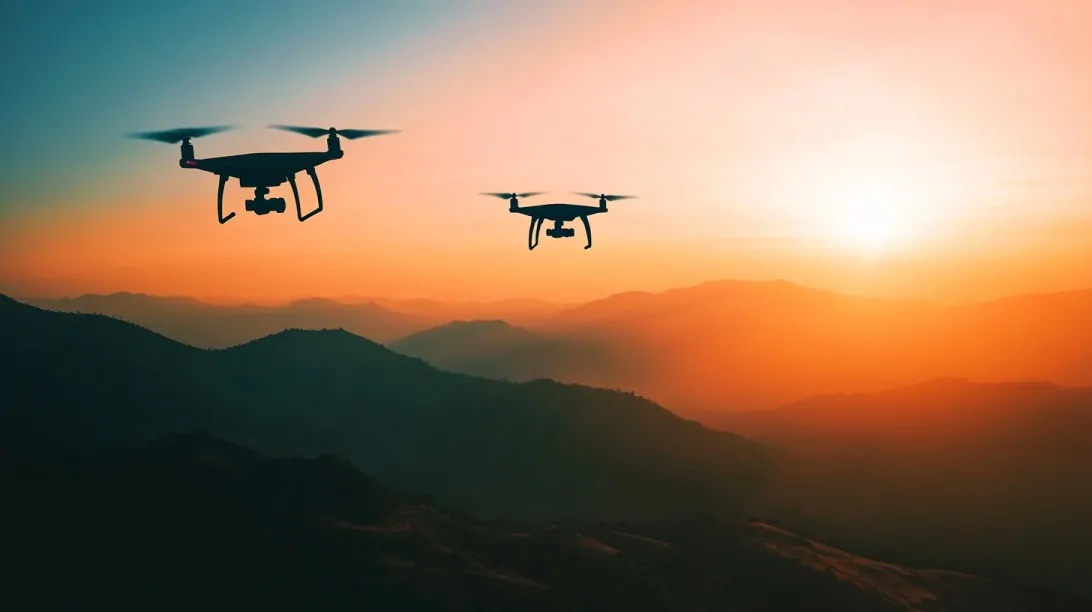
Drones have become tools of foreign policy. Turkey and Israel, in particular, use drone exports to cement defense ties and influence conflicts. Turkish drones have been central in Azerbaijan’s military operations, while Israeli UAVs are widely adopted across Asia and Europe.
Exported drones not only shape battlefield outcomes but also extend political leverage. Supplier nations often pair hardware with training, maintenance agreements, and strategic consultation.
Maritime and Naval Drone Expansion
Countries like France and Australia are investing in naval UAV programs. France’s SDAM project aims to outfit warships with rotary drones, enhancing fleet awareness and maritime ISR without reliance on manned helicopters.
Australia fields the MQ-4C Triton, designed for extended surveillance over the Indo-Pacific.
Maritime drones serve roles in anti-submarine warfare, sea lane monitoring, and disaster response. Their endurance and flexibility make them ideal for vast or hostile waters where manned patrols are riskier or costlier.
Final Thoughts
Military drones have reshaped global defense strategy by enabling unmatched flexibility, persistent surveillance, and precision strike capabilities.
The ten countries listed here represent not only the largest drone fleets but also the most advanced and strategically influential UAV programs in 2025.
Numbers alone do not determine superiority. Tactical integration, indigenous innovation, export influence, and multi-domain deployment define actual drone power.
Related Posts:
- Global Overview - Which Countries Have Laser Weapons…
- The List of Countries With Nuclear Weapons and Their…
- Top 7 Most Challenging U.S. Airports According to…
- What Are the Most Produced Firearms in the US in 2025?
- Taranis Drone – Britain’s Most Advanced UAV Yet
- America’s Silent Warriors - Who are the Most Famous…

